Racing Club: Champions on the Field and in the Data
Categories: Player Performance, Team Performance
Racing Club are the new champions of the Argentine Superliga, and have returned to the summit after winning the Primera División four years ago. Like outgoing champions Boca Juniors, Racing were never headed in the league table after the very early rounds. Unlike Boca, they faced a challenger who applied increasing amounts of pressure until late in the season. Defensa y Justicia, the little upstarts from the southern outer suburbs of Buenos Aires, gave a strong challenge that was deserving of their second-place finish.
Racing’s credentials for the title become stronger if you look at the major metrics. Racing finished the Superliga with the most wins, most goals scored, fewest goals allowed, and fewest losses (tied with Defensa).
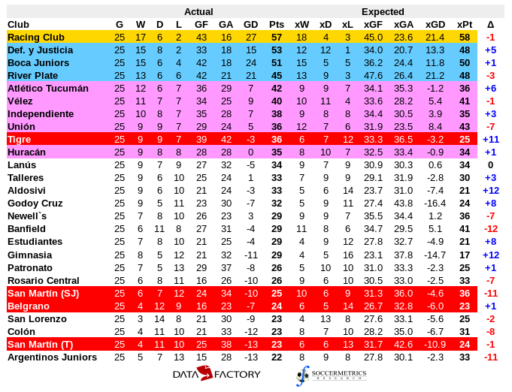
Take a deeper dive, and Racing’s dominance becomes even more apparent. They scored the second-most goals from open play, scored the most penalties, and allowed the fewest goals from open play. Only one penalty was called against Racing, one of five clubs that managed that (Boca, Argentinos, Lanús, and Rosario Central). In terms of expected goals per 90 minutes, Racing generated 1.67 xG/90, more than any side in the division except for River Plate, and allowed 0.88 xG/90, third-fewest in Superliga (Defensa and Unión allowed fewer). No other side created more or allowed fewer expected goals per 90 minutes from open play.
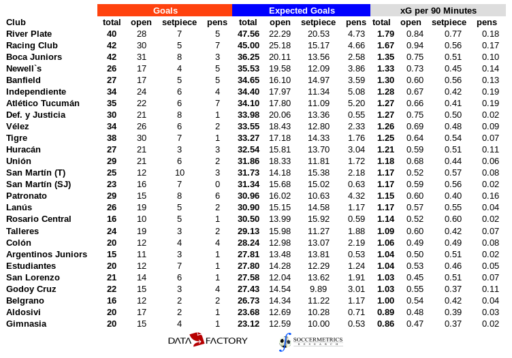
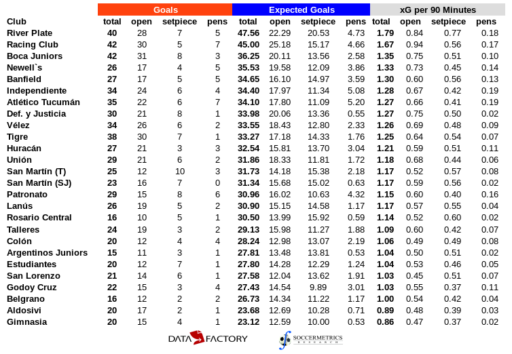
Plumbing the depths even further, we get to the cumulative track of expected goals generated and allowed by the teams per 90 minutes. If we overlay the xG (black) and xGA (red) tracks with a green line that represents league average xG, we observe yawning gaps between the three lines that persisted over the entire season. No other team comes close to having a chart like this. Boca’s xG performance was significantly far from the league average, but not like Racing’s. River’s was close, but only in the second half of the season. And Defensa y Justicia paired an average offensive performance with the best defense in the league, at least until the final three weeks.
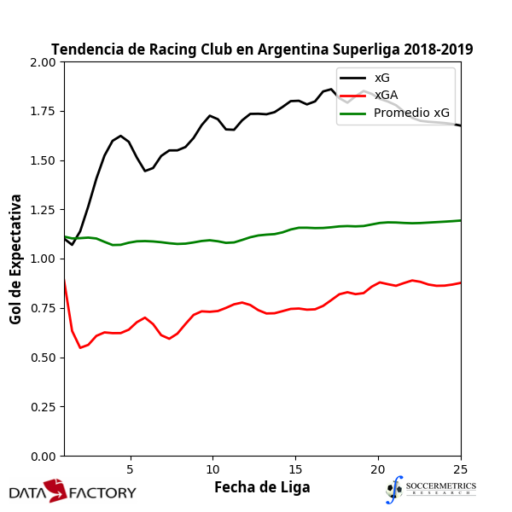
Let’s drill down to individual level. The goalscoring charts in this season’s Superliga were first dominated by Independiente’s Emmanuel Gigliotti and then by Racing’s Lisandro López who scored 17 goals. Maybe Gigliotti would have remained top scorer had he not been transferred to Mexico during the (Argentine) summer break, but López did score just as many goals before the break (nine) as his did after (eight). In terms of expected goals, no other player was as good at generating scoring chances from the run of play, except for the Nico Fernández of Defensa y Justicia and the aforementioned Gigliotti.
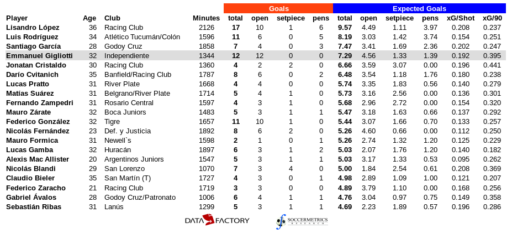
Yes, López did score a lot of penalties. But you look at his shot map in the league, you see that he scored almost all of his other goals from open play and all of them from inside the penalty area.
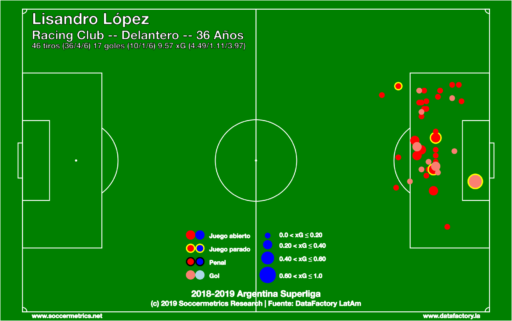
If you look at the individual charts for expected assists, you will find another Racing player at the top of the list: Guillermo Fernández. A new arrival from Godoy Cruz during the off season, Fernández was a versatile midfielder who could be dangerous anywhere on the field but especially from a central position. He could put the ball in dangerous areas from any type of play and he scored a few goals as well. In a league that features so many strikers over 30, it’s interesting and a bit refreshing to see the assist charts dominated by players in the upswing or prime of their careers.
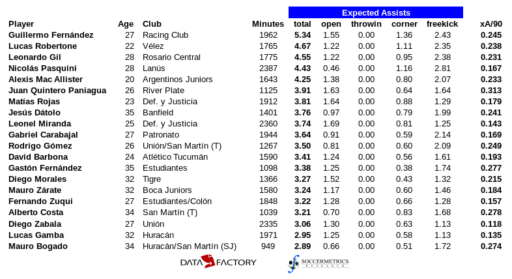
So who was my pick for best player? López, without any doubt. He was the best striker in the tournament, and the most indispensable player to Racing’s title triumph. La Academia saw significant contributions from players such as Guillermo Fernández, Jonatan Cristaldo, and Federico Zaracho, but Racing’s title run would have been a lot more difficult without López’s goals. The football punditry class in Argentina has seen the pick the same way.
Racing — a club that very nearly went out of existence twenty years ago — have now accumulated more league titles in the last two decades than they did in the previous four. It’s a club with a glorious amateur history, a pioneering international history, and now one navigating and upending the current reality in Argentine football. Racing’s been great in this championship. But I’d like to think that Gabriel Milito, Diego Huerta et al. would be pleased to learn that the metrics validate their greatness as well.

